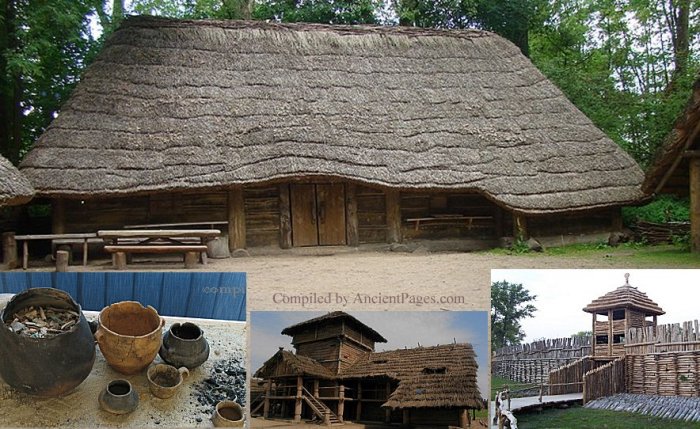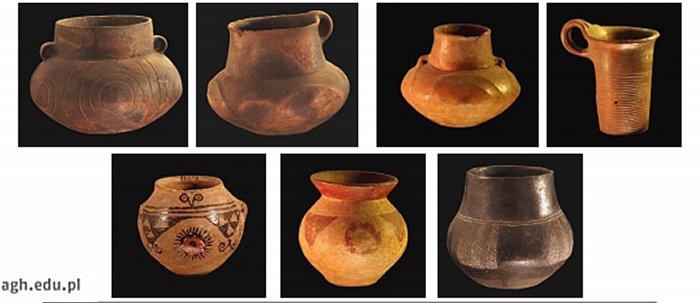Lusatian Culture: Ancient Traders Of Central Europe Built Strongly Fortified Settlements To Withstand Scythian Attacks
A. Sutherland - AncientPages.com - Lusatian culture dates back to the Bronze Age and the Early Iron Age (14th-4th century BC), occupying the broadest range of central Europe.
This culture covered almost the entire territory of the Polish lands, central and northwestern Slovakia and Moravia, northern and northeastern Bohemia, Saxony, Lusatia, eastern Thuringia, and eastern Brandenburg in central-eastern Germany, east Pomerania. It reached the western part of Volhynia (a historical region of northwestern Ukraine).
In the Bronze Age, the central European Lusatian (Lausitz) culture expanded around 1200 BC and persisted in the first centuries of the Early Iron Age.
Economy Of Lusatian People
The Lusatian economy varied depending on the area. The people were occupied with cultivation and animal husbandry (cattle, pigs, sheep, goats, horses, dogs).
Plants primarily cultivated by the then-population were mainly wheat, barley, millet, rye, legumes, and oilseeds.
Lusatian Spiral disc brooches Wicina. (Wikimedia Commons) - Image credit: filmArchive - CC BY 3.0 DEED
Other productive plants to grow included beans, peas, lentils, flax, and poppy. Additionally, traces of domesticated pears, plums, and apples were found. Among soil cultivation tools were horn diggers, hoes made of animal antler fragments, seedlings, and wood-made trowels.
The household included bone, wood, clay, antler, flint, stone, ceramic, weaving, fiber processing, and later bronze foundry; the beginnings of iron processing are distinguished, as well as pottery, weaving, bone and horn processing, and carpentry.
The Lusatians developed communication (two- and four-wheeled carts and boats) and trade that played an important role: all metallurgical manufacturing was probably based on the imported raw material.
Amber And Metal Trade Despite Danger From Scythian Attacks
The period of Scythian expansion from the Black Sea area into central Europe dates back to c.800 BC - 600 BC; however, between 500 BC-350 BC, many Scythian incursions took place in the northern part of central Europe. These attacks ceased in the fourth century BC.
Despite the danger, the amber trade still flourished, and the Lusatians continued to be successful mediators between the amber gatherers and the Hallstatt culture (1200 BC – 500 BC) in the eastern Alpine area and the Etruscans in Italy at the beginning of the seventh century.
Innovations such as bronze horse-gear comprising bridle-bits, cheek-pieces, ornamental plates, and the first iron objects spread to the Baltic area by the Lusatians. Metal finds from the seventh and sixth centuries BC revealed in Pomerania, East Prussia, and western Lithuania attest to continuing contacts with the Lusatians in central Europe and the Germanic peoples.
Lusatian Settlements And Burial Tradition
The Lusatians built different settlements, including extensive, long-lasting open settlements and small seasonal settlements, in the central and western areas of the nearby town.
Known settlements include the stronghold at Biskupin in Poland and Buch near Berlin, Germany. They had open villages and fortified settlements (burg wall or grod) located in marshy areas or on hilltops. The ramparts were constructed of wooden boxes filled with soil or stones.
The Urnfield culture (c. 1300 BC – 750 BC) was central Europe's late Bronze Age culture. The Lusatians highly respected the Urnfield tradition (c 1300 BC – 750 BC), according to which the dead were cremated; their remains were placed in urns and put into the burial pit together with dishes in which food and drinks were offered to the deceased.
Archaeological excavations of the graves revealed garment decorations such as clasps, pins, bracelets, etc., made mainly of bronze and other everyday items. The culture buried the deceased in flat, extensive cemeteries, and the cremation burials were often accompanied by numerous secondary pottery vessels and bronze tools, weapons, and ornaments.
Lusatian cemeteries reveal significant variations regarding the number of graves. The smallest cemetery contained only two graves, the largest over eighteen hundred. But the majority ranged from scores of tombs to several hundred.
Mount Sleza, in southern Poland, was a well-known Lusatian cult center. During the Neolithic Period and at least as far back as the 7th century BC, Mount Sleza was a holy place highly revered by the Lusatian people.
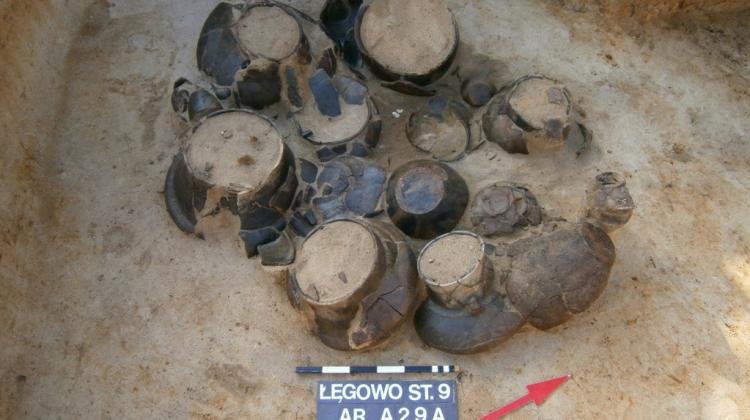 The cemetery of the Lusatian culture community from the end of the Bronze Age and the Early Iron Age. (Remains from over 2,500 years ago, unearthed during excavations in Legów near Wagrowiec (Greater Poland Voivodeship). Image credit: naukawpolsce.pap.pl
The cemetery of the Lusatian culture community from the end of the Bronze Age and the Early Iron Age. (Remains from over 2,500 years ago, unearthed during excavations in Legów near Wagrowiec (Greater Poland Voivodeship). Image credit: naukawpolsce.pap.pl
"The ossuary was covered with an inverted dish and frequently put into another bigger pot along with accessory vases. In the better-preserved and well-excavated Lusatian cemeteries, low barrows were found above the graves, some less than 1 meter, some reaching up to 1.5 m, but usually of the same height as the pile of stone, which covered the grave in the middle of the barrow. The barrow was encircled by a ring of rocks built in several rows; on top of the barrow stood a tall, pointed tombstone.
Such classical Lusatian barrows have been discovered in Saxony. In other cemeteries, cairns were found above the graves, but the low earthen barrows must have disappeared over the intervening eras…" 1
Pottery, Weapons, And Jewelry Of Lusatians
Various forms and tumor ornaments characterize the ceramics of the Lusatian culture.
The pottery was also very well burned out. Later, many decorations appeared with painted geometric motifs, usually yellow, brown, or red.
See also: More About History
Clay pots and hand-glued objects were unearthed in large quantities and many forms. In the oldest phase, the Lusatian vessels were decorated with extruded tumors, later two-conical, sharply profiled, and in the early Iron Age amphoras appeared with a bloated belly, narrowing neck, and most often decorated with engravings (also zoo- and anthropomorphic), occasionally with narrative scenes. Metal objects (axes, sickles, knives), weapons (swords, daggers, spearheads, and arrows), and decorations (necklaces, bracelets, earrings) produced by this ancient culture (or imported) systematically change over time.
The Collapse Of Lusatian Culture
Many Scythian arrowheads have been found in Lusatian strongholds, indicating that the eastern aggressors continuously attacked the settlements. The Lusatian strongholds were now in their last stages of survival. Eventually, the culture was devastated and collapsed due to Scythian invasions and the Germanic expansion
Written by – A. Sutherland - AncientPages.com Senior Staff Writer
Updated on January 20, 2024
Copyright © AncientPages.com All rights reserved. This material may not be published, broadcast, rewritten or redistributed in whole or part without the express written permission of AncientPages.com
Expand for referencesReferences:
Malinowski, Tadeusz. "FUNERAL CUSTOMS OF THE BRONZE AND IRON AGES IN POLAND." Archaeology, 16, no. 3 (1963): 183-86.
- Marija Gimbutas, Bronze Age cultures in Central and Eastern Europe
More From Ancient Pages
-
 Anomalous Ancient Structures In The South West Pacific Remain Unexplained
Civilizations | May 19, 2018
Anomalous Ancient Structures In The South West Pacific Remain Unexplained
Civilizations | May 19, 2018 -
 Mount’s Bay, Lyonesse, Langarroc: Legendary Submerged Lands And Buried Towns Of Cornwall
Featured Stories | Apr 21, 2022
Mount’s Bay, Lyonesse, Langarroc: Legendary Submerged Lands And Buried Towns Of Cornwall
Featured Stories | Apr 21, 2022 -
 Mysterious Cave With Giant Skulls Decorated By The Neanderthals Discovered In Spain
Archaeology | Jan 27, 2023
Mysterious Cave With Giant Skulls Decorated By The Neanderthals Discovered In Spain
Archaeology | Jan 27, 2023 -
 A 4.4 Million-Year-Old Hand Of ‘Ardi’ Has Some Clues On Humans’ Upright Walking
Fossils | Feb 25, 2021
A 4.4 Million-Year-Old Hand Of ‘Ardi’ Has Some Clues On Humans’ Upright Walking
Fossils | Feb 25, 2021 -
 King Ur-Nammu – King Of Ur, King Of Sumer And Akkad – The One Who Built The Temple Of God Enlil
Ancient History Facts | Aug 30, 2015
King Ur-Nammu – King Of Ur, King Of Sumer And Akkad – The One Who Built The Temple Of God Enlil
Ancient History Facts | Aug 30, 2015 -
 Ancient DNA Reveals Irish Are Not Celts – Irish Ancestors Came From Biblical Lands – Scientists Say
Archaeology | Mar 30, 2020
Ancient DNA Reveals Irish Are Not Celts – Irish Ancestors Came From Biblical Lands – Scientists Say
Archaeology | Mar 30, 2020 -
 On This Day In History: Mary Queen Of Scots Was Forced To Abdicate – On July 24, 1567
News | Jul 24, 2016
On This Day In History: Mary Queen Of Scots Was Forced To Abdicate – On July 24, 1567
News | Jul 24, 2016 -
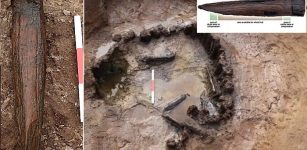 ‘Exceptionally’ Rare Iron Age Axle Found In Suffolk
Archaeology | Jan 26, 2023
‘Exceptionally’ Rare Iron Age Axle Found In Suffolk
Archaeology | Jan 26, 2023 -
 Can Stonehenge Be Saved From Bulldozers Or Have Druids Been Defeated?
News | Nov 10, 2020
Can Stonehenge Be Saved From Bulldozers Or Have Druids Been Defeated?
News | Nov 10, 2020 -
 Controversial Story And Secret Knowledge Of Li Ching-Yuen Who Lived For 256 Years
Featured Stories | Sep 19, 2015
Controversial Story And Secret Knowledge Of Li Ching-Yuen Who Lived For 256 Years
Featured Stories | Sep 19, 2015 -
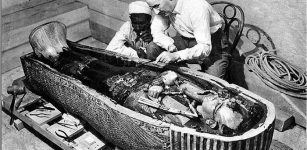 On This Day In History: King Tut’s Tomb Is Unsealed And Opened – On Feb 16, 1923
News | Feb 16, 2017
On This Day In History: King Tut’s Tomb Is Unsealed And Opened – On Feb 16, 1923
News | Feb 16, 2017 -
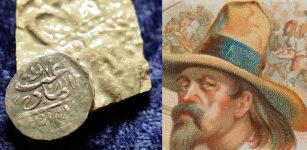 Can This Ancient Coin Solve The Mysterious Disappearance Of Pirate Henry Every?
Archaeology | Apr 1, 2021
Can This Ancient Coin Solve The Mysterious Disappearance Of Pirate Henry Every?
Archaeology | Apr 1, 2021 -
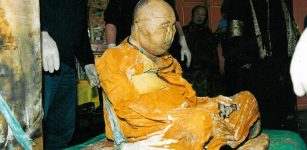 Mystery Of Lama Dashi-Dorzho Itigilov: A Mummy Whose Body Defies Time
Featured Stories | Sep 21, 2018
Mystery Of Lama Dashi-Dorzho Itigilov: A Mummy Whose Body Defies Time
Featured Stories | Sep 21, 2018 -
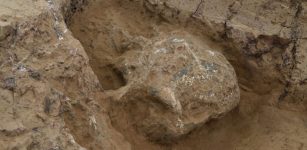 Intriguing Million-Year-Old Human Skull Offers Key Clues To Our Evolution
Archaeology | Sep 30, 2022
Intriguing Million-Year-Old Human Skull Offers Key Clues To Our Evolution
Archaeology | Sep 30, 2022 -
 Walls Of Uruk Built By Sumerian King Gilgamesh 4,500 Years Ago
Featured Stories | Nov 28, 2015
Walls Of Uruk Built By Sumerian King Gilgamesh 4,500 Years Ago
Featured Stories | Nov 28, 2015 -
 Mystery Of Saint Brendan’s Island – Glimpses From An Alternate Reality, Fata Morgana Or A Submerged Land?
Featured Stories | May 6, 2023
Mystery Of Saint Brendan’s Island – Glimpses From An Alternate Reality, Fata Morgana Or A Submerged Land?
Featured Stories | May 6, 2023 -
 On This Day In History: First Experimental Hydrogen-Filled Balloon Reaches A 900m Altitude – On August 27, 1783
News | Aug 27, 2016
On This Day In History: First Experimental Hydrogen-Filled Balloon Reaches A 900m Altitude – On August 27, 1783
News | Aug 27, 2016 -
 We Dated A Sacred Aboriginal Women’s Site Used for Birthing Ceremonies And Discovered 7,000 Years Of Tool Making
Featured Stories | Jun 21, 2024
We Dated A Sacred Aboriginal Women’s Site Used for Birthing Ceremonies And Discovered 7,000 Years Of Tool Making
Featured Stories | Jun 21, 2024 -
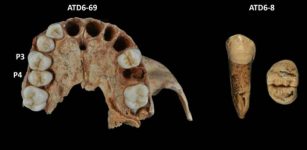 Neanderthals Are Not The Only Species Whose Dentition Is Characterized By The Possession Of Thin Enamel
Archaeology | Jan 19, 2023
Neanderthals Are Not The Only Species Whose Dentition Is Characterized By The Possession Of Thin Enamel
Archaeology | Jan 19, 2023 -
 Mystery Of The Hidden Shoes Discovered In Ancient European Houses – What Is Behind This Bizarre Tradition?
Featured Stories | Oct 2, 2021
Mystery Of The Hidden Shoes Discovered In Ancient European Houses – What Is Behind This Bizarre Tradition?
Featured Stories | Oct 2, 2021

